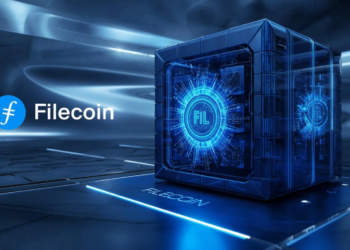As decentralized finance (DeFi) continues to grow and evolve, innovation never takes a break. One of the most fascinating — and controversial — tools to emerge in this space is the flash loan. If you’re unfamiliar with this concept, you’re not alone. Flash loans might sound like something out of a sci-fi novel, but they are very real and quite powerful.
In this blog, we’ll break down what flash loans are, how they work, their benefits and risks, and why they’ve become both admired and feared in the crypto space.
What Is a Flash Loan?
A flash loan is an unsecured loan offered by a DeFi protocol that allows you to borrow a large amount of cryptocurrency without any collateral, as long as you return the funds within the same blockchain transaction.
Yes, you read that right: no collateral is needed. Sounds too good to be true? The catch is that everything — borrowing, using, and repaying — must occur within one transaction block. If the borrower fails to repay the loan within that block, the entire transaction reverts, as if it never happened.
In Simpler Terms:
Imagine walking into a store, picking up an expensive item, using it instantly to earn a profit, and returning it before anyone notices. That’s the idea behind a flash loan — all happening in milliseconds on the blockchain.
How Do Flash Loans Work?
Flash loans are made possible through smart contracts — self-executing contracts coded on blockchains like Ethereum.
Here’s a step-by-step of how a typical flash loan works:
- Request the Loan
The borrower initiates a loan from a DeFi protocol like Aave or dYdX. - Execute Arbitrage or Strategy
Within the same transaction, the borrower uses the loaned amount to perform an action — often arbitrage, liquidation, or collateral swapping. - Repay the Loan + Fees
Before the transaction ends, the borrower must repay the original amount plus a small fee (e.g., 0.09%). - Fail to Repay? It All Reverts
If the loan isn’t repaid in full within the transaction block, the entire process is cancelled, and no one loses any funds.
This atomicity — the all-or-nothing nature of blockchain transactions — makes flash loans possible and relatively safe for lenders.
Why Use Flash Loans?
So, what’s the point of flash loans if they must be repaid instantly? Here’s where creativity and strategy come in. Flash loans are powerful tools for:
1. Arbitrage Opportunities
If the same asset is priced differently across multiple exchanges, a trader can use a flash loan to buy low on one platform and sell high on another — profiting from the price difference without needing upfront capital.
Example:
ETH is $1,800 on Uniswap and $1,820 on Sushiswap. A trader borrows 100 ETH via a flash loan, buys it on Uniswap, sells on Sushiswap, repays the loan, and keeps the $2,000 profit — all in seconds.
2. Collateral Swaps
Users can swap one form of collateral for another without manually repaying a loan. This is helpful for adjusting positions without liquidation.
3. Self-Liquidation
A user may use a flash loan to pay off their own debt and retrieve their collateral in a more efficient way, especially when trying to avoid liquidation penalties.
4. Refinancing
Flash loans can be used to move debt from one lending protocol to another offering better interest rates.
Popular Flash Loan Providers
Several DeFi protocols offer flash loans, including:
- Aave – One of the first and most popular platforms supporting flash loans.
- dYdX – Offers advanced trading and lending features with flash loans support.
- Uniswap (v3) – Not designed primarily for flash loans, but its pools can be used creatively in flash loan strategies.
- Balancer and DODO – Other liquidity protocols that support complex flash loan mechanics.
Real-World Use Cases
Let’s take a look at how flash loans are applied in real-world DeFi:
Example 1: Arbitrage Trader
A trader notices ETH trading at different prices on Uniswap and Curve. They borrow 500 ETH using a flash loan, buy low, sell high, repay the loan, and walk away with a tidy profit — all without risking any of their own capital.
Example 2: Debt Optimization
Someone with a loan on Compound wants to move their position to Aave, where the interest rate is lower. Using a flash loan, they repay their Compound loan, move their collateral, and open a new loan on Aave — saving on fees and interest.
Risks of Flash Loans
While flash loans are technically safe for lenders due to their atomic nature, they’re not risk-free for the ecosystem. In fact, flash loans have been used in many DeFi exploits, often causing millions in damages.
Flash Loan Attacks
In a flash loan attack, an attacker exploits vulnerabilities in smart contracts by using borrowed funds to manipulate prices, trigger liquidations, or exploit bugs.
Notable Examples:
- bZx Hack (2020): An attacker used a flash loan to manipulate price oracles and steal over $1 million.
- PancakeBunny (2021): A flash loan exploit caused over $45 million in losses.
These attacks typically involve price manipulation on low-liquidity pools or exploiting poorly written contracts.
Can Flash Loan Attacks Be Prevented?
DeFi developers are actively working on ways to reduce the risks associated with flash loans. Some key strategies include:
- Using reliable oracles (like Chainlink) to prevent price manipulation.
- Adding circuit breakers to smart contracts to detect and halt suspicious activity.
- Improved testing and formal verification of smart contract code before deployment.
Ultimately, the responsibility lies with developers to build robust contracts, as flash loans themselves are just tools — neutral by nature.
Flash Loans: Innovation or Loophole?
This question divides the DeFi community.
Some view flash loans as brilliant innovations, democratizing access to arbitrage and leveling the playing field. Others see them as weapons that only sophisticated actors can wield safely, often at the expense of less secure protocols.
Here’s the truth: flash loans are neither good nor evil. They’re like a power tool — incredible in skilled hands, dangerous in careless ones.
Pros and Cons of Flash Loans
| Pros | Cons |
|---|---|
| No upfront capital needed | Risk of being used in attacks |
| Enables advanced DeFi strategies | Requires high technical knowledge |
| Enhances market efficiency | High gas fees during execution |
| Democratizes arbitrage | Can hurt unprotected protocols |
The Future of Flash Loans
As the DeFi space continues to grow, we can expect flash loans to become:
- More accessible: Platforms may offer simplified tools for users to perform basic arbitrage or refinancing.
- Better regulated: Protocols will adopt stricter standards to prevent malicious exploits.
- Used creatively: Developers may discover new, positive applications that enhance liquidity and user experience.
Final Thoughts
Flash loans are a cutting-edge financial instrument unique to the DeFi ecosystem. They open up remarkable possibilities — from arbitrage to portfolio optimization — all without requiring any upfront investment.
However, with great power comes great responsibility. While flash loans offer unprecedented opportunities, they’ve also been linked to some of the most damaging attacks in DeFi history. As always, education, caution, and secure coding practices are key to harnessing their full potential.
In the right hands, flash loans are not just tools — they are building blocks for the future of decentralized finance.
Join Us : Twitter | Website | GitHub | Telegram | Facebook | YouTube

























